Art & Exhibitions
Ai Weiwei, Darling Dissident, Presents Largest Ever Show in Berlin Spanning 32,300 Square Feet
The Chinese artist’s latest show is a super-sized experience.
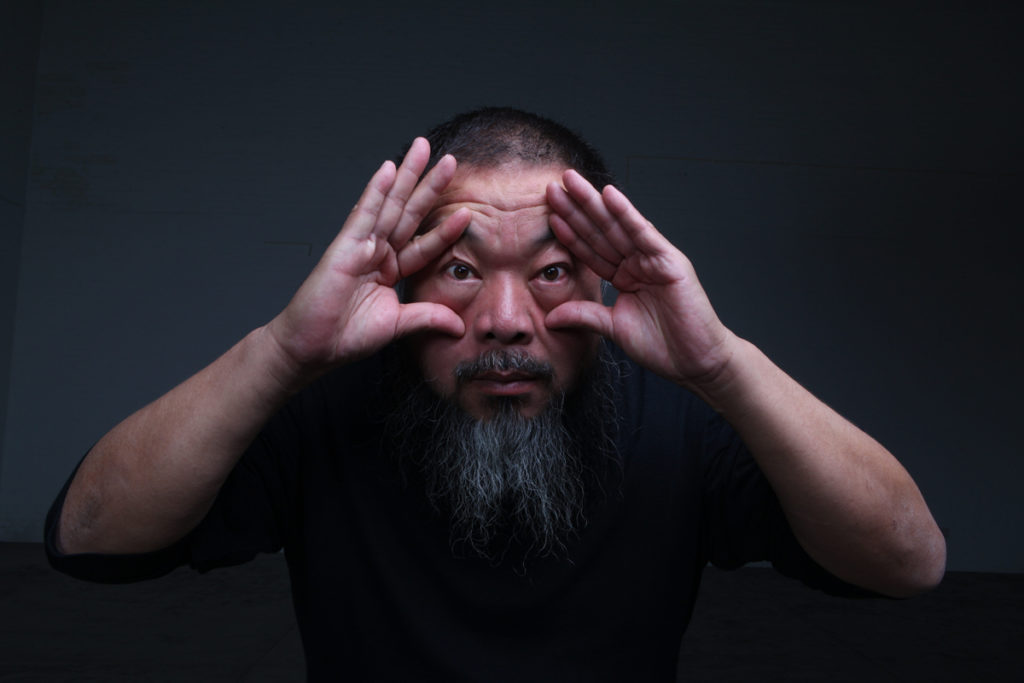
The Chinese artist’s latest show is a super-sized experience.

Alexander Forbes

That Ai Weiwei’s largest-ever show would take place in Germany might strike some as odd. His major traveling exhibition, According to What?, will touch down at the Brooklyn Museum later this month. But the Berlin debut of Evidence, arguably much more significant in its tracing of Ai’s most recent work, is no coincidence. His first major museum show was at Munich’s Haus der Kunst in 2009. He holds a professorship at Berlin’s University of the Arts. And he’s in the process of building a subterranean studio in Berlin’s Prenzlauer Berg. Germany remains in Ai’s mind a sort of second home.
The Berlin show is vast, Ai’s largest ever, spanning 32,300 square feet in the Martin-Gropius-Bau. Most of the works are new, tracing the time since his relationship with the government went sour ahead of the 2008 Olympics. They also tend to take a more personal tone, playing up (for better or worse) the celebrity status that he has garnered, particularly since his arrest, and which has since clouded much of the judgments of his oeuvre. Some older, rarely-seen pieces like One Man Shoe (1987) from his very first show at New York’s Ethan Cohen also crop up. More or less, though, 2008 is a central jumping off point.
Ai’s efforts to identify the more than 5,000 children who died in the 2008 earthquake in Sichuan province due to shoddy construction—and whose names scroll past in a newspaper-column width stream of Chinese characters on a old laptop screen—remain important and revelatory. Likewise, the direct connection made by the many pieces of steel rebar from the earthquake’s wreckage that make up Forge Bed (2008–2012). The Chinese government had attempted to keep not only the number of victims secret but their names as well, leading Ai and volunteers to visit the region or contact families in hopes of gathering a comprehensive list. It was these efforts, as well as his pre-Olympics Guardian op-ed that most fervently spurred on Chinese efforts to silence the artist, which in 2011 came to a head.
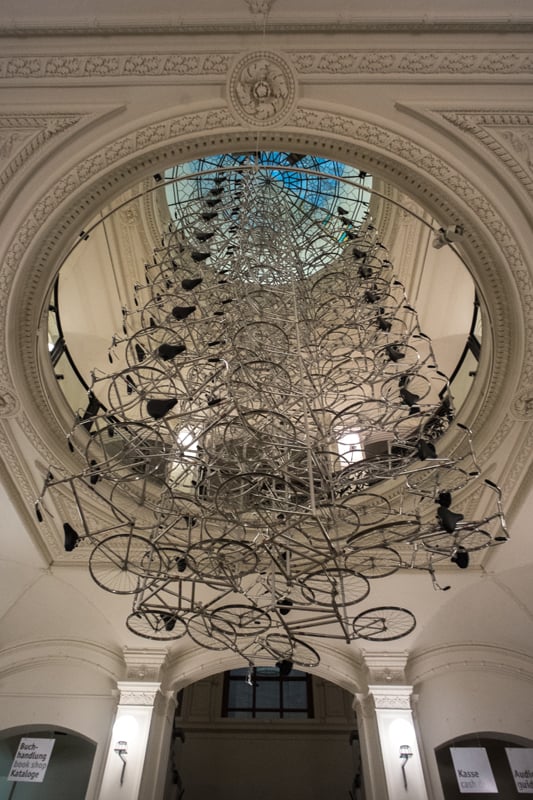
Ai Weiwei, Very Yao (2009-2014)
© Ai Weiwei. Fotos © Mathias Völzke
Enter 81 (2013): An exact replica of the “cell” in which Ai was held for 81 days in 2011. The room’s walls and furniture are covered in white packing foam, creating a kind of DIY suicide-watch chamber. Only the floor— dark wood planks, each separated by a brass strip—is left hard and pigmented. Bits of green and gold wallpaper peak out from beneath the white layer here and there, a brass number “1135” hangs on the door, a semi-ornate chair covered in plastic wrap, and two others that look straight out of a conference center, suggest that, rather than a prison, we’re in a converted section of a rather run-down hotel. (The Chinese government are indeed alleged to use sections of otherwise innocuous hotels as so-called ‘black-jails’ for dissidents and political prisoners.)
As is suggested by the show’s title, evidence is what especially Ai Weiwei’s recent work provides. As Westerners, we’re lucky enough to be able to pick up the New York Times and read quite plainly about the China he seeks to expose. Thus the evidence provided in Ai’s art is all too easily met by either a general blasé, a focus on materiality and process, or an individualization and particularization of the artist’s personal suffering. However, within 81, the anywhere-ness of hotel furnishings and layouts give even a Western viewer the ability for a slightly more affectively-oriented relationship to the work.
Ai’s guards covered the walls of his prison in white foam a seeming attempt to anonymize the chamber (and likely to amplify the florescent lighting left on 24/7). That this “cell” was differentiated by its cover in foam could not be more appropriate to Ai’s oeuvre. Pacing the rest of the exhibition’s 18 rooms, the surface comes up again and again as a central marker used in unpacking the disparity between reality, presentation, and belief. In a similar move, Ai takes to cultural artifacts, giving them a fresh lick of paint or a good sanding. The works demonstrate just how easy it is in an authoritarian system to change accepted narratives both grand and minute.
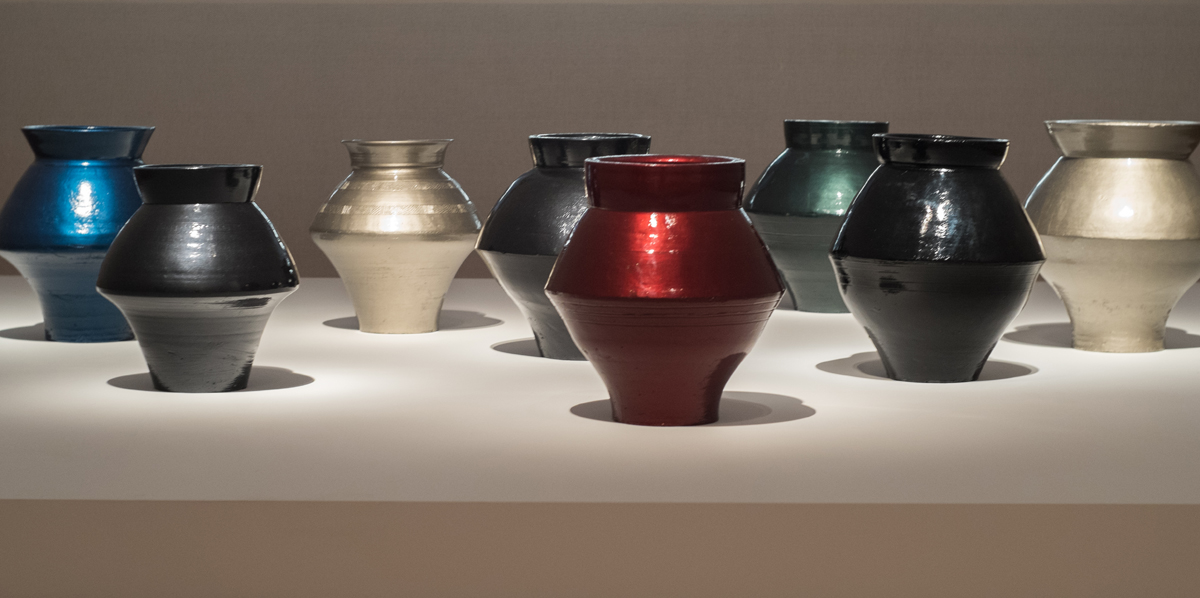
Ai Weiwei, Han Dynasty Vases with Auto Paint (2014)
© Ai Weiwei. Foto © Mathias Völzke
Ai’s newest works for the show, Han Dynasty Vases with Auto Paint (2014), are exemplary in this regard. They step forward Ai’s long-running use of Neolithic vases in his practice, beginning with the iconic early work Dropping a Han Dynasty Urn (1995). The Coloured Vases question historical authenticity and historicity in a country like China where monuments are routinely torn down rather than restored to be replaced by replicas and ancient, whole city blocks leveled for new construction.
Han Dynasty Vases with Auto Paint instead shakes the core of China’s current politico-economic narrative. Using the most popular colors chosen by government officials and executives for the German luxury cars in which they prefer to be chauffeured, Ai points at what might be called the growth-myth surrounding China today.
Market analysts cite the country’s buoyant GDP, exemplified by these German automobiles (and the growing number of middle-class car owners as well). International agencies and laymen alike point to improving social conditions, even going as far as to suggest that Ai Weiwei’s ability to exist—or at least to not have fallen among the vast number of individuals the country executes each year—is a sign of improvement. But, like the paint, these are only facades of the real China. One might argue that there is an inevitable trickledown effect and that progress of any kind should be lauded rather than condemned. But Ai’s vases serve to suggest that this simply isn’t the case and that instead the façade only allows progress in social relations to stagnate at best and potentially to deteriorate.
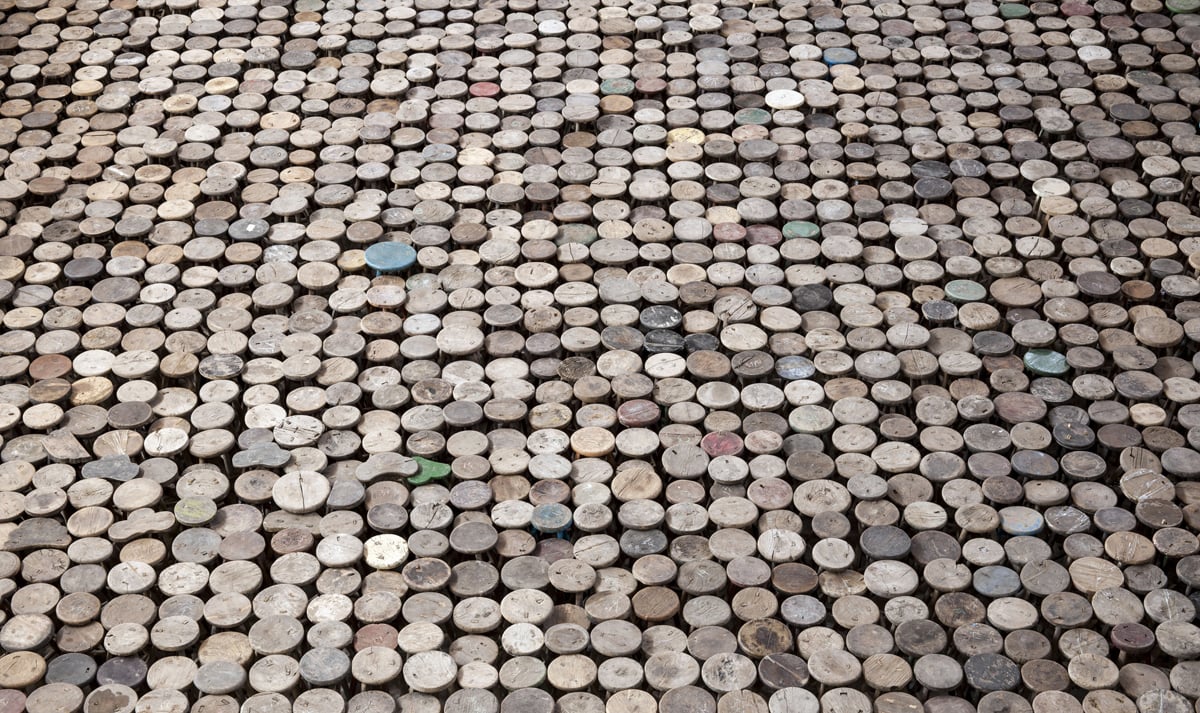
Ai Weiwei, Stools (2014)
© Ai Weiwei. Fotos © Reschke, Steffens & Kruse, Berlin/Köln
The new vases are, to an extent, a mirror image of the revisionist history embodied by Table and Chest with stripped chairs (2007). These works fill a room on the opposite side of the exhibition and create what’s perhaps Ai’s rendition of the Cultural Revolution. In the series, by sanding off, stripping, a mere millimeter of patinaed surface on each of the over 300 year old pieces of furniture, the chairs lose both their economic value and their intellectual status as antiquities. In metaphorical terms their structures are returned to a ahistorical state, ready to be recast to some new ideology-engendering purpose—or just needing to be thrown out completely.
More than 6,000 stools from the Ming and Qing dynasties fill that center of the Ai exhibition in the Martin-Gropius-Bau’s famed Lichthof and represent the Ai’s true subjects and intended audience. Each stool appears as if a unique stand-in for its former owner, marked by worn-away color, nicks and cuts, modifications made to seats, and grime. Only from above, on the museum’s second floor balconies can the scale of Stools (2014) be fully appreciated. From that height, each stool’s particularities fade into an organized, pixilated whole, like a washed out Richter Farben painting. It demonstrates the very difficulty in taking Ai Weiwei’s situation, indeed, his art, and trying to use it to understand his country in its totality. What relevance does one slash on one stool leg have to its singular, structural integrity, never mind the spirit of the whole?
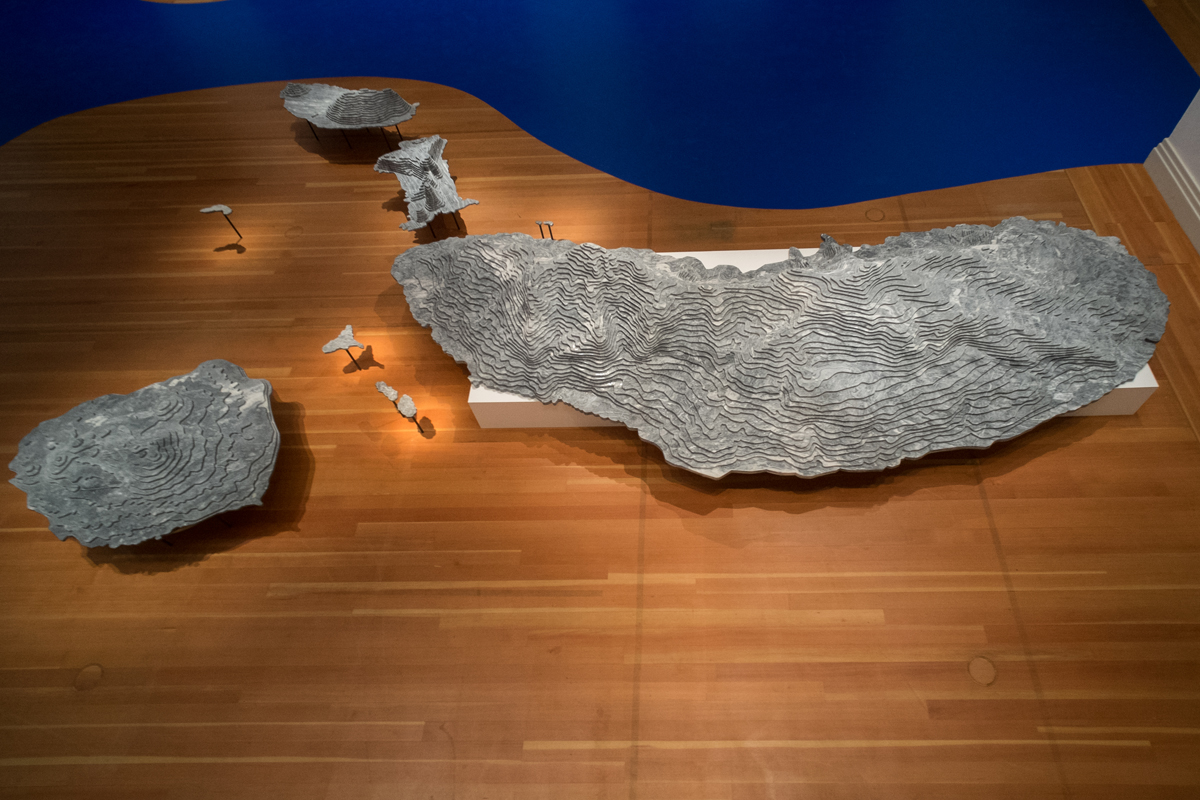
Ai Weiwei, Diaoyu Islands (2014)
© Ai Weiwei. Foto © Mathias Völzke
Ai Weiwei may for some still “play a central role in how we gain insight into modern-day China,” as Peter Pakesch wrote in Galerie Urs Meile and JRP Rinier’s 2007 compendium on the artist’s then-recent work, but I would venture that for the majority who watched the broadcasts from the 17 different international news stations at the Martin-Gropius-Bau yesterday, Ai is a celebrity, a figment of pixels and glass, ink and paper. To the degree that is the case, his public’s ability to map his micro-experience onto the macro of China as a whole has diminished by the lack of his presence.
In our digital, social media driven age, one wouldn’t think that eliminating a person’s ability to be physically present would have much effect on their change-producing power. As some of the taxi drivers interviewed in the video that accompanies Ai’s crystal, Taxi Window Crank (2012) point out, the government’s order that drivers remove hand cranks for passenger windows in order to prevent patrons from throwing protest flyers out the windows while passing Tiananmen Square during the National Party Congresses likely had very little impact on the amount of criticism flowing through the web and, by proxy, the collective consciousness. Likewise, Ai Weiwei has never been more active on Twitter. That’s a great method of raising awareness and of disseminating 140 character-long ideas. But Twitter and even YouTube are weak in their ability to foster organized collectivities that remain stable over the long-term. Networks of face-to-face contact are, by and large, still required.
The Chinese government has been hopelessly unsuccessful in their efforts to silence Ai by taking his passport. But their efforts have had unintended consequences: namely this world celebrity-ization. That, if anything, has been the Chinese government’s crowning achievement. “Free Ai Weiwei” remains an important message, moniker, and goal. But like taking his vases paint as their full material value, stopping there largely misses the larger point of his efforts and, indeed, the point of the works that put him under surveillance in the first place.
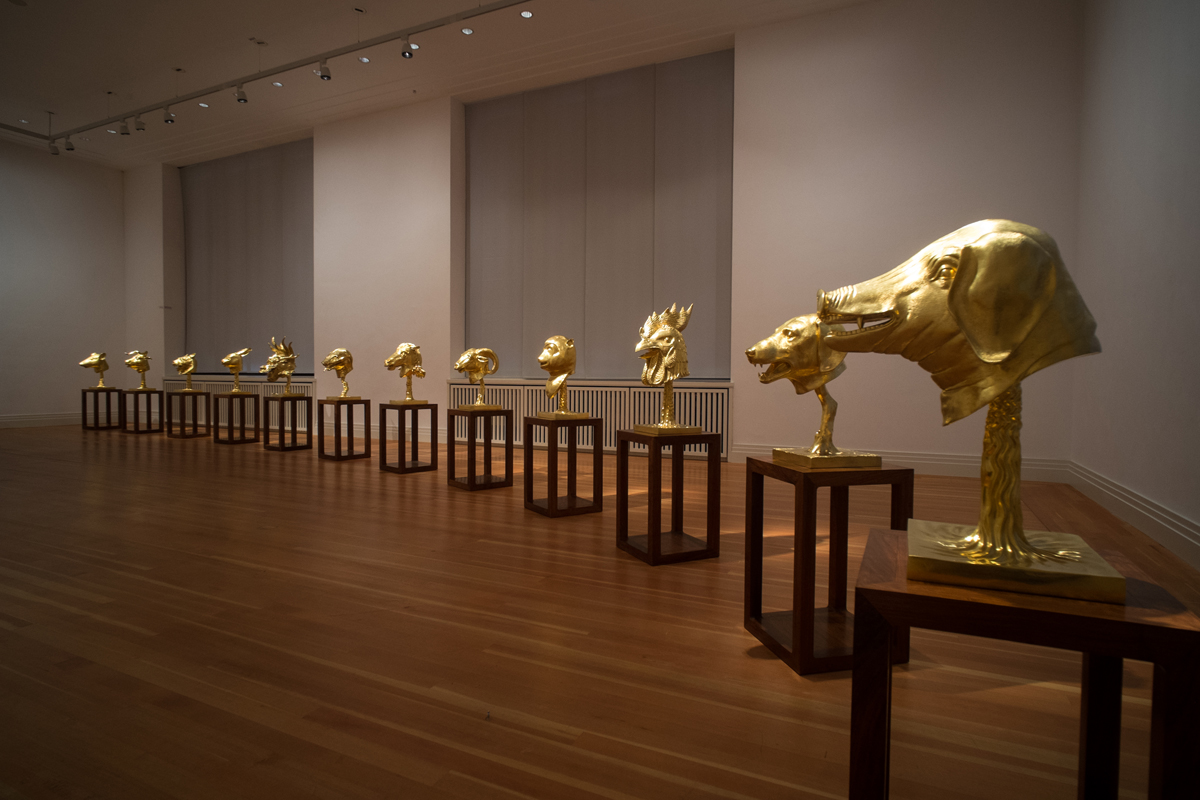
Ai Weiwei, Circle of Animals (2011)
© Ai Weiwei. Fotos © Mathias Völzke